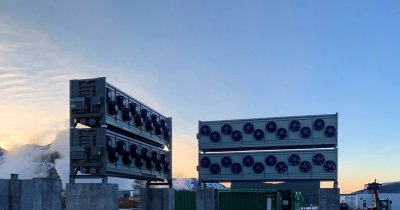Water covers more than two-thirds of Earth’s surface, but 97% of it is saltwater. The salt concentration in that water is far too high for our bodies to process, so actually, if we would drink salted water we would become dehydrated and die.
That is why humans need freshwater, that is water with a salt concentration of less than 1 percent.
Adding to this the fact that around the globe there are regions that don't have access to drinkable water, it is clear that we need devices that can turn saltwater or dirty water into fresh and drinkable water.
In order to transform potable water into a resource available also in poor communities that also lack other resources, such as energy, the best solution at hand are desalination units powered by the sun.
There are various solutions that are being tested at present, but one essential fact to keep in mind is that these units can be made from cheap and also durable materials. This is where the device made by the MIT and Chinese researchers comes into play, because it uses gravity-driven convection to move the water.
”Many attempts at solar desalination systems rely on some kind of wick to draw the saline water through the device, but these wicks are vulnerable to salt accumulation and relatively difficult to clean. The team focused on developing a wick-free system instead. The result is a layered system, with dark material at the top to absorb the sun’s heat, then a thin layer of water above a perforated layer of material, sitting atop a deep reservoir of the salty water such as a tank or a pond”, it is stated in the release on the MIT News website.
According to the scientists, natural convection drives the desalination process in this device.
In the confined water layer near the top, “the evaporation happens at the very top interface. Because of the salt, the density of water at the very top interface is higher, and the bottom water has lower density. So, this is an original driving force for this natural convection because the higher density at the top drives the salty liquid to go down.” The water evaporated from the top of the system can then be collected on a condensing surface, providing pure fresh water.
The team of researchers has proven the concept using small benchtop devices, so the next step will be starting to scale up to devices that could have practical applications.
Based on their calculations, a system with just 1 square meter of collecting area should be sufficient to provide a family’s daily needs for drinking water, and the necessary materials for a 1-square-meter device would cost only about $4.
Like I've said before, this device is not the first attempt to bring clean water to communities that don't have access to it. MIT researchers have also built a portable desalination unit that generates clean drinking water without the need for filters or high-pressure pumps. Alongside the obvious innovation this device brings to the market, another advantage is the fact that the unit weighs just around 10 kilograms and can be used anywhere and by anyone.
 Oana Coșman
Oana Coșman












Any thoughts?